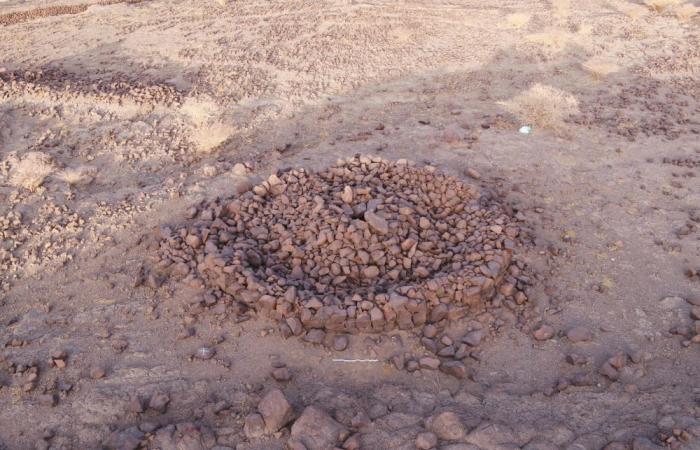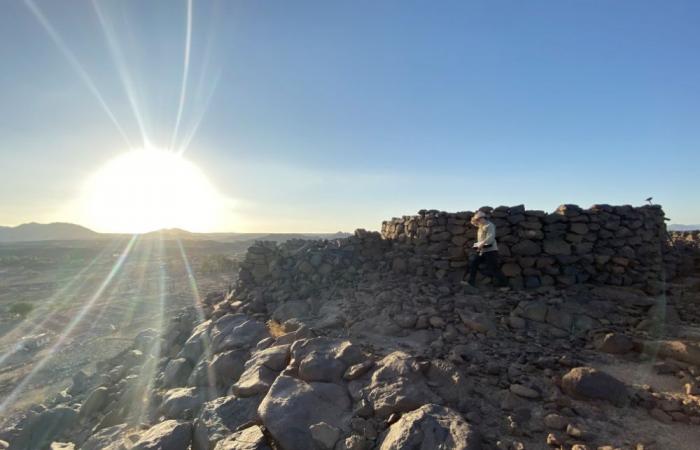Thank you for reading the news about KSrelief chief: Saudi Arabia ranks third globally in providing humanitarian assistance around the world and now with the details
Jeddah - Yasmine El Tohamy - RIYADH: The Royal Commission for AlUla, in partnership with the University of Western Australia, revealed that the people who lived in the ancient northwest of the Arabian Peninsula built long “funerary avenues” surrounded by thousands of burial monuments during the third millennium BC.
The publication of the findings in “The Holocene” is the culmination of a year of tremendous progress made by the UWA team, working under RCU, to shed light on the lives of the ancient inhabitants of the Arabian Peninsula.
The passages, linking oases and pastures, reflect a high degree of socio-economic interdependence among the region’s population, indicating the existence of a sophisticated social network 4,500 years ago that extended across the peninsula.
The discovery joins the steady progress of archaeologists working in partnership with RCU in understanding the mysteries of human existence and the societies that lived in the region.
FASTFACT
The discovery joins the steady progress of archaeologists in understanding the mysteries of human existence and the societies that lived in the region.
The work of the UWAs team is part of a broader effort made by 13 specialized teams with members from around the world who work in the Archeology and Conservation Project in cooperation with Saudi experts in AlUla and Khaybar.
Amr Al-Madani, CEO of the RCU, said: “The more we learn about the ancient inhabitants of northwest Arabia, the more we are inspired by the way our mission reflects their mindset.

“They lived in harmony with nature, honored their predecessors, and reached out to the wider world. The work done by our archaeological teams in 2021 demonstrates that Saudi Arabia is a home for top-flight science — and we look forward to hosting more research teams in 2022,” he added.
Director of archaeology and cultural heritage research at RCU, Dr. Rebecca Foote, said: “Projects that have been conducting fieldwork in AlUla and Khaybar for over three years, such as the UWA team, have started publishing their results, and it is terrific to see how analyses of the data are elucidating so many aspects of life from the Neolithic to the Bronze Age in northwest Arabia.
“These articles are just the beginning of the many publications that will advance our knowledge of prehistoric to modern times and have significant implications for the wider region,” she continued.

Researcher and historian Dr. Eid Al-Yahya said that the graves in Khaybar, known as Harat Al-Nar (Fiery Field), as well as others, are considered diverse urban patterns. “There are more than 100 patterns, and each has a distinctive architectural shape. All of the graves contain humans laid to rest in a squatting or ‘fetus’ position. We were able to identify more than a million graves with the help of Google and through a specialized scientific team.”
Regarding the timing of this era, Dr. Al-Yahya said: “These graves were made when the Arabian Peninsula was very fertile and looked like the savannah forests. They symbolize constructions made by people who lived in prosperity, did not live in a barren desert preventing them from building a burial with complex and precise engineering methods.”
He noted that the huge graves pointed towards the sky and became an important symbol for the Mesopotamian and Nile civilizations, stressing that they are the civilization of peoples who have an ancient visual and celestial dimension.
He explained that, according to the researches of the German Max Planck Institute, the last decades of the savannah era in the Arabian Peninsula dated back 6,500 years ago. When the Arabian Peninsula became a desert, its people moved to lands with rivers and transmitted their culture as well, including cuneiform, which can be found on most of the graves.
Al-Yahya said that a large part of these ancient graves were exposed to excavation in ancient times, unlike the Nile graves, which were famous for hiding the tombs of kings underground so that they would not be seen.
Cuneiform graves were visible and built above the mountains where furniture and weapons were buried with the deceased along with some of their belongings.
He stressed that what the RCU had achieved in collaboration with the UWA proved that the graves are some of the oldest types of architecture in the world — older than the pyramids dating back over 8,000 years.
Al-Yahya estimated that some of these graves may date back to the Middle Stone Age, and that they may find graves dating back further still.
These were the details of the news KSrelief chief: Saudi Arabia ranks third globally in providing humanitarian assistance around the world for this day. We hope that we have succeeded by giving you the full details and information. To follow all our news, you can subscribe to the alerts system or to one of our different systems to provide you with all that is new.
It is also worth noting that the original news has been published and is available at Arab News and the editorial team at AlKhaleej Today has confirmed it and it has been modified, and it may have been completely transferred or quoted from it and you can read and follow this news from its main source.



